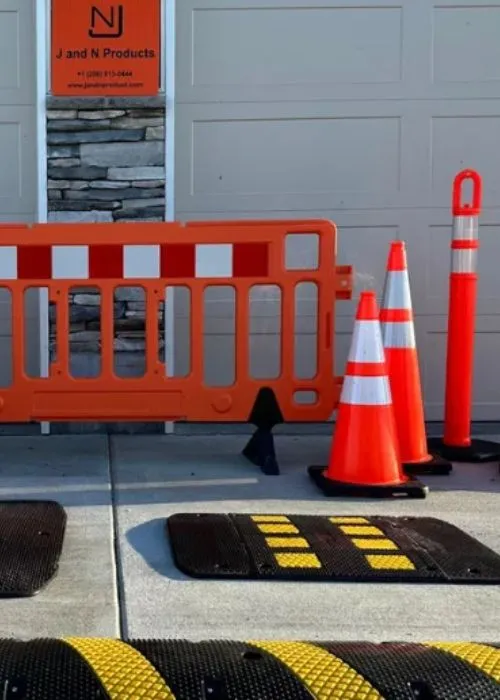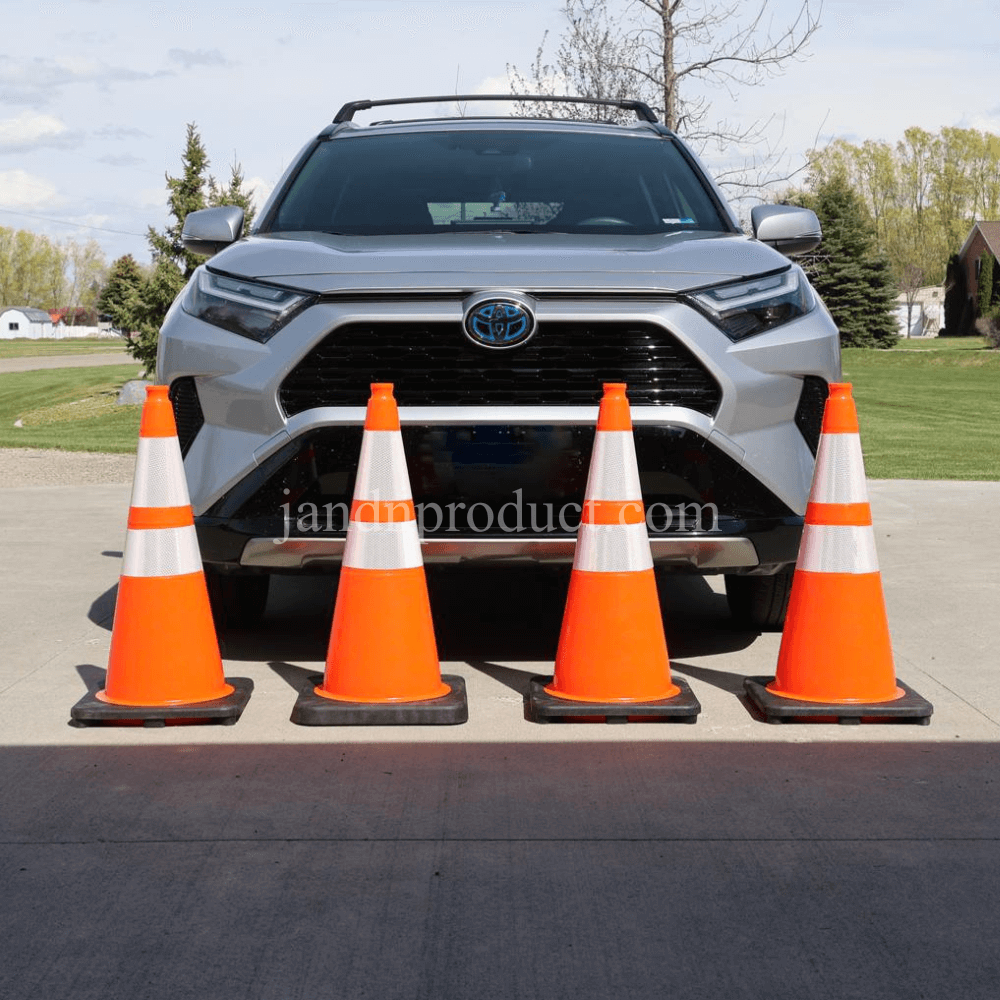Traffic Cone Performance in Every Season
Traffic Cone Performance in Every Season: A Complete Guide to Year-Round Safety
Traffic cones are essential tools for managing safety in a wide range of environments—construction zones, parking lots, events, warehouses, and emergency response situations. While most people think of cones as a one-size-fits-all solution, professionals know that weather plays a huge role in how well cones perform.
Whether you’re dealing with summer heat, winter snow, or unpredictable spring storms, selecting the right cone for the season helps prevent accidents, prolongs product life, and improves overall site efficiency. This guide will walk you through how weather affects cone performance, which cones to choose for each season, and tips for getting the most value out of your traffic safety equipment all year long.
Why Seasonal Conditions Matter for Cone Performance
Many people overlook how weather can affect traffic cones. But if you’ve ever seen a cone blown over in the wind, buried in snow, or cracked from sun exposure, you know exactly what we mean.
Here’s how seasonal conditions impact cone usage:
- Temperature affects material flexibility and durability
- Sunlight causes fading and UV damage
- Rain, snow, and ice create slippery or unstable ground
- Wind knocks over lightweight or improperly placed cones
- Visibility varies based on lighting and background contrast
By choosing the right cone for the right season—and knowing how to maintain it—you keep your team safer, reduce liability, and spend less on replacements.
Spring: Rain, Mud, and New Projects
Spring is a transitional season. As snow melts and rain increases, work ramps up for landscaping, construction, road repair, and outdoor events. But wet conditions also make surfaces slippery or unstable.
Top Challenges:
- Muddy or soft ground can cause cones to sink or tip
- Reduced visibility from overcast skies or fog
- Debris from spring cleaning or runoff can block reflective tape
Spring Cone Recommendations:
1. Weighted Base Cones (28”–36”)
- Help prevent tipping in muddy areas
- Provide stability on loose gravel or soil
2. High-Visibility Reflective Collars
- Improve visibility in cloudy, foggy, or rainy weather
3. UV-Stabilized Orange PVC
- Prevents early fading as daylight hours increase
Spring Usage Tips:
- Use cone bars or caution tape to create larger perimeter zones
- Clean reflective collars regularly to keep them effective
- Rotate cones weekly if exposed to long periods of direct sunlight
Summer: Heat, Glare, and Heavy Traffic
Summer is often the busiest time for construction, utility work, and public events. It’s also when traffic increases due to travel and tourism. But long, hot days can take a toll on traffic cones—especially low-quality ones.
Top Challenges:
- High UV exposure fades low-grade cones
- Heat can make some plastics brittle or warped
- Glare from sun or pavement reduces visibility
- More frequent setups and takedowns wear out cones faster
Summer Cone Recommendations:
1. Durable PVC Cones with UV Inhibitors
- Hold up better in prolonged heat and sunlight
2. LED Lighted Cones
- Provide visibility during early morning setups or late evening breakdowns
3. 36” Cones with Reflective Collars
- Taller cones stay visible over cars or crowds in larger areas
Summer Usage Tips:
- Store cones in shaded or covered areas when not in use
- Inspect for warping or brittleness every 1–2 weeks
- Pair cones with portable signs for added communication during high-traffic events
Fall: Wind, Early Darkness, and Debris
Fall is unpredictable. Some days feel like summer, while others bring early frost and strong winds. Shorter daylight hours also mean visibility becomes a concern for both drivers and crews.
Top Challenges:
- Wind gusts can knock over light or poorly placed cones
- Leaves and debris can cover reflective surfaces
- Diminishing daylight affects visibility and reaction time
Fall Cone Recommendations:
1. Weighted Rubber Base Cones
- Lower center of gravity improves wind resistance
2. Colored Cones for Zoning
- Use red, yellow, green, or blue cones to separate areas or teams
- Prevents confusion during overlapping activities
3. Reflective or LED Add-Ons
- Reflective collars should be well-maintained or replaced
- Optional LED strobe caps enhance nighttime safety
Fall Usage Tips:
- Anchor cones with sandbags or cone weights during stormy days
- Use delineators or cone bars to build visible boundaries
- Wipe off leaves or debris that obscure cone surfaces
Winter: Snow, Ice, and Low Light Conditions
Winter is the most demanding season for traffic cones. Snowbanks, icy roads, and freezing temperatures require heavy-duty equipment that can remain visible and functional under extreme conditions.
Top Challenges:
- Snow covers or obscures cones
- Ice causes cones to slide or fall over
- Cold temperatures make plastic brittle and prone to cracking
- Low light makes visibility difficult for drivers
Winter Cone Recommendations:
1. Cold Weather Rubber Cones (36”)
- Stay flexible even in freezing temperatures
- Provide maximum visibility above snowbanks
2. Class 3 Reflective Tape
- Meets high-intensity reflectivity requirements for dark conditions
3. Cone Lights or Beacons
- Improve nighttime visibility during snow removal or emergencies
Winter Usage Tips:
- Clear snow around cones regularly to maintain visibility
- Use base weights to prevent shifting on icy pavement
- Avoid stacking cones during extreme cold—they may crack
How to Extend the Life of Your Cones (Year-Round Tips)
No matter the season, traffic cones will last longer and perform better with proper care. Here are some general best practices:
1. Rotate Frequently
- Swap cones in and out of use to reduce uneven fading or wear.
2. Clean Monthly
- Use mild soap and water to clean reflective tape and remove grime.
3. Store Properly
- Keep cones out of direct sunlight when not in use.
- Avoid stacking cones in freezing conditions to prevent cracking.
4. Inspect for Damage
- Look for cracks, brittleness, faded color, or worn tape.
- Replace cones with missing reflective elements immediately.
5. Invest in Quality
- Cheap cones may save you money up front but will wear out quickly—especially in extreme conditions.
What About Delineators and Cone Accessories?
While cones are incredibly versatile, some projects benefit from other tools, especially in challenging weather. Here are a few options to consider:
- Delineator Posts: Taller and slimmer than cones, better in snow or narrow areas.
- Cone Bars: Create instant barriers between cones.
- Cone Lights or Flashers: Add visibility for nighttime or stormy weather.
- T-Top Bollards: Great for long-term, high-wind zones with space for signage.
Need Help Choosing the Right Cones for the Season?
At J&N Products, we offer a wide variety of safety cones, reflective gear, delineators, and cone accessories designed to perform in all weather conditions. Whether you’re preparing for icy roads or organizing a sunny summer event, we’re here to help you find the safest, most effective solution.
We also offer bulk pricing, fast shipping, and expert support for businesses, municipalities, schools, and event planners across the country.
Reach out to our team today to get personalized recommendations or browse our seasonal cone options online.
Stay seen. Stay safe. Every season.



